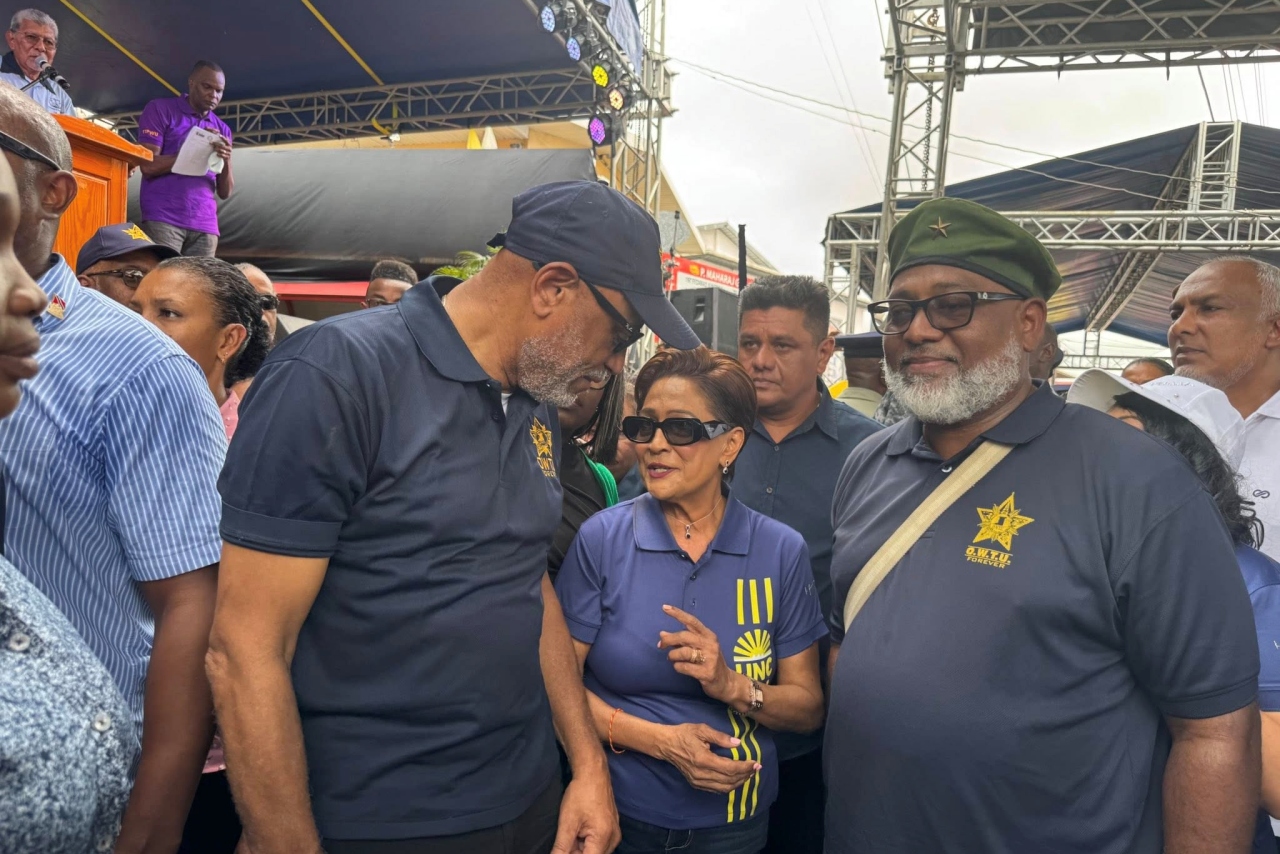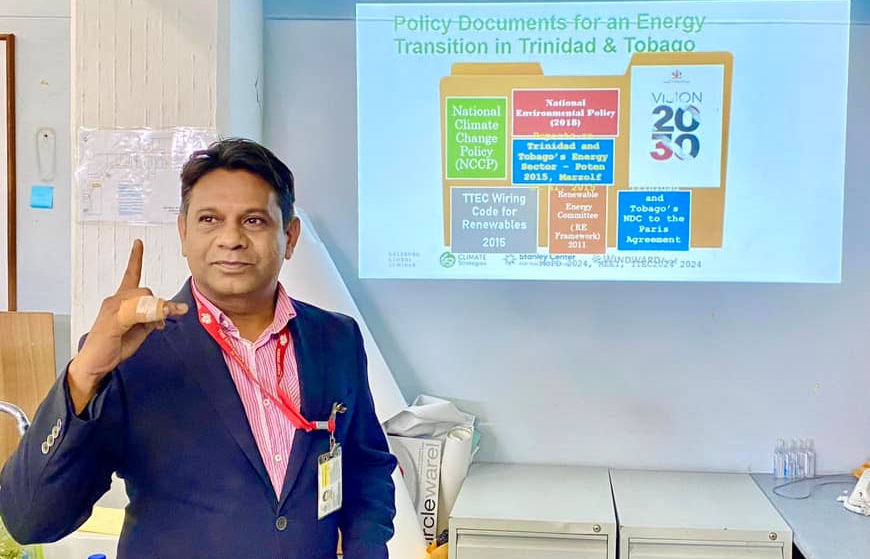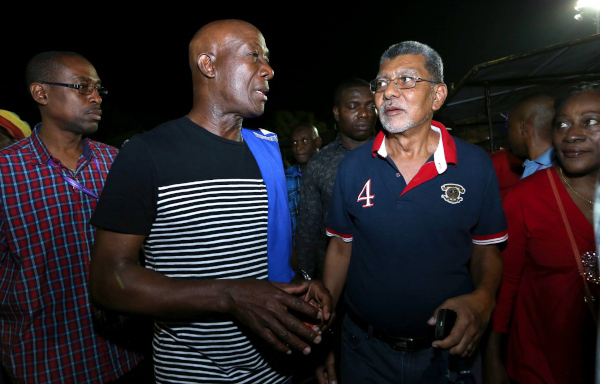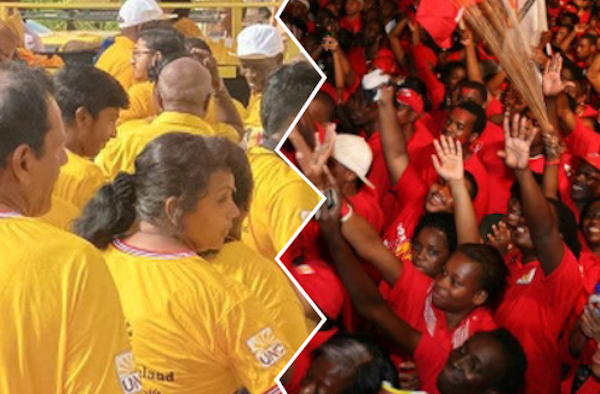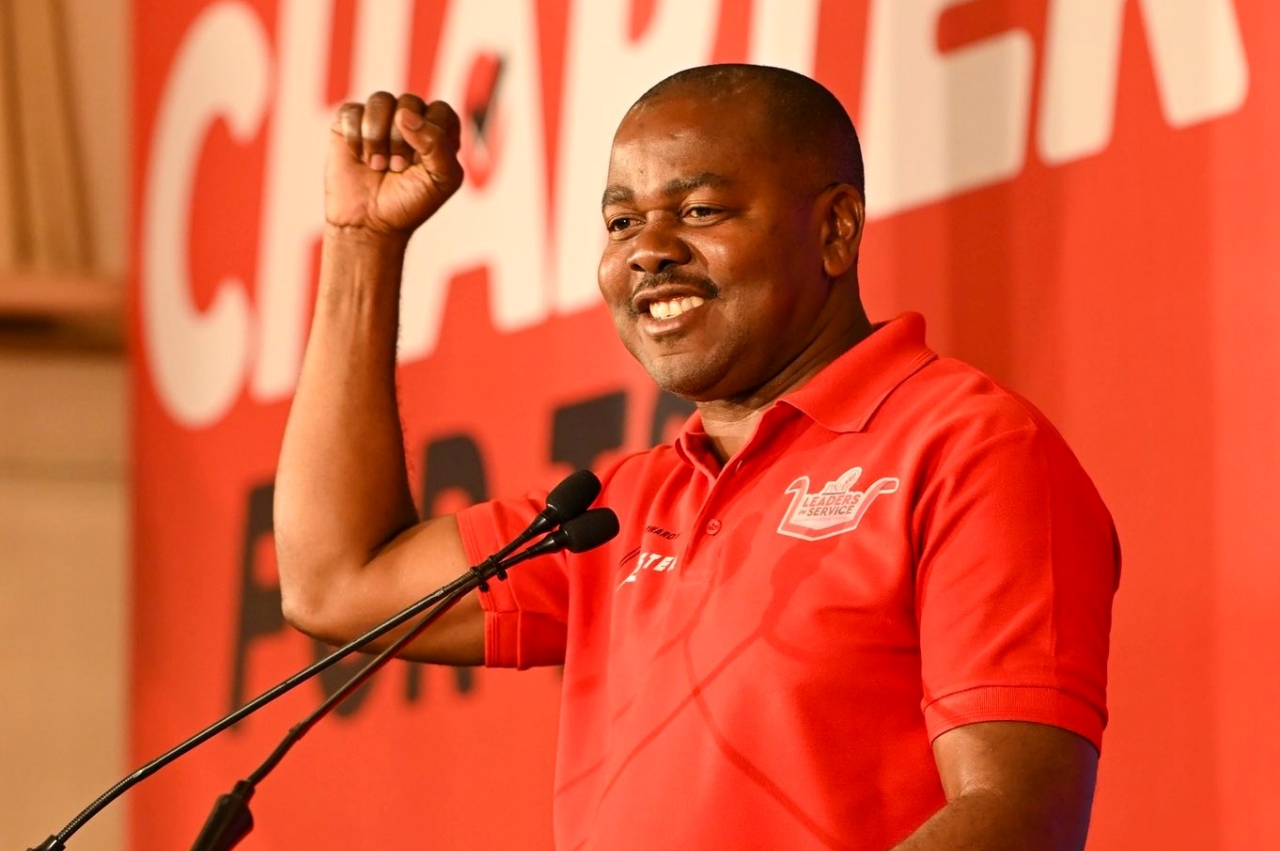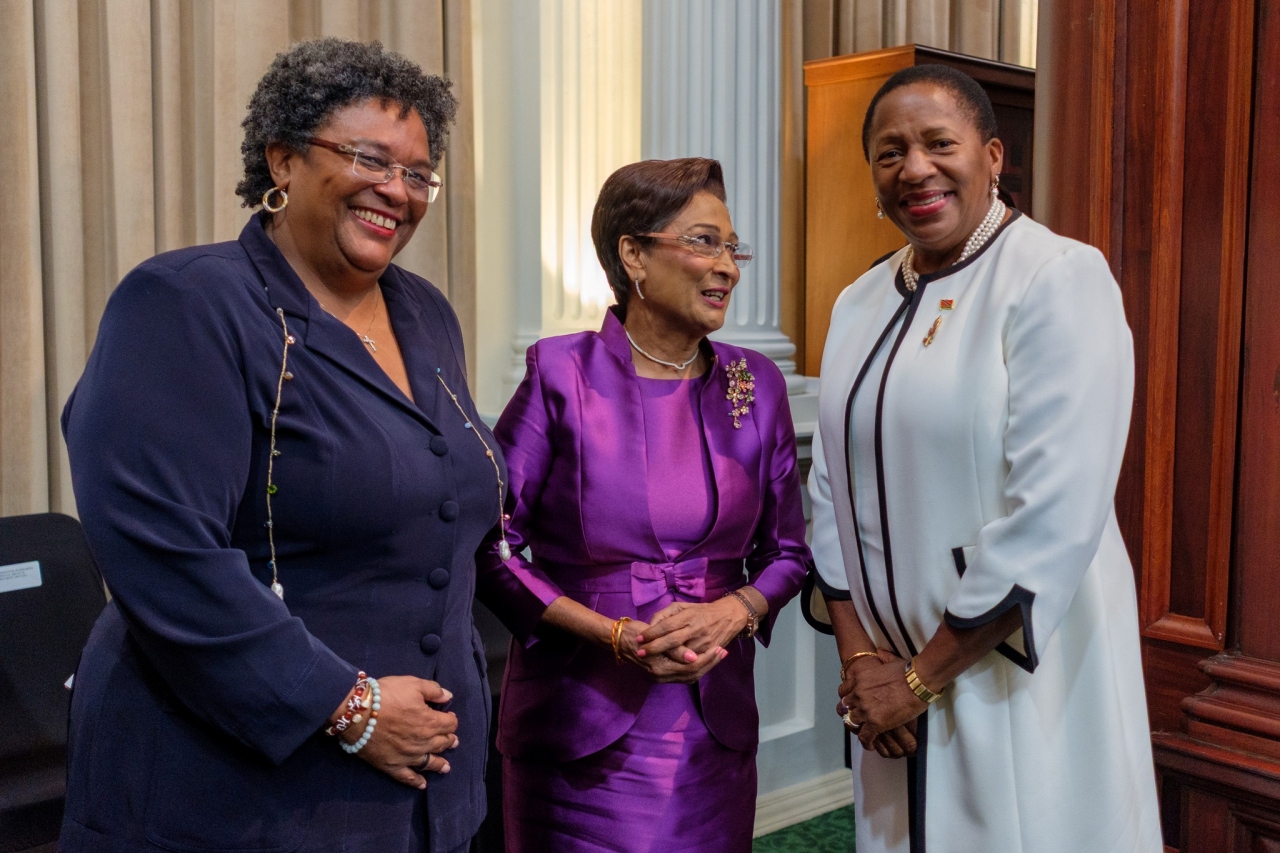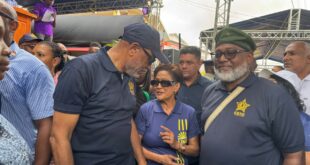The following column was written by Raffique Shah on 9 June 2000:
IN 1970, I was the only Indian officer in the Trinidad and Tobago Regiment. I was also the youngest officer, having graduated from Sandhurst in July 1966, some four months after I had turned 20.
When I returned from England in January 1967 to take up duties as a platoon commander, it was the first time I got to know the Regiment (as it was, and still is, commonly referred to), since I was sent to Sandhurst in 1964 without any prior training locally.

(Copyright TT Guardian)
At the time, fewer than five per cent of soldiers were Indians—a ratio that may still exist, although I suspect the numbers will have moved up slightly.
There was nothing sinister about the racial composition of the Regiment, although it is true to say that the sons of PNM party card holders will have been given preferential treatment, and since the PNM’s support base was mainly African, most of the recruits were African. It was a fact of life, too, that most Indian parents did not want their sons to join the Regiment.
In my own case, for example, having graduated from Presentation College, Chaguanas, with a Cambridge School Certificate (Grade I), and not wanting to be a burden on my struggling sugar-worker-father, I opted to work rather than pursue ‘A’ Levels. I also scouted around for some kind of scholarship in order to further my education. These were very few at the time, and competition for them was keen.
When I read an advertisement in the newspapers inviting college graduates to apply for commissions (officer rank) in the army, I saw not merely an avenue to achieve some of the goals I had set myself, but an opportunity to engage in the kind of adventurous life I had already learned to love.
I should mention that while I was at ‘Pres’, I had joined the Cadet Force; again, one of a small minority of Indians to so do. I quietly pursued the opportunity to attend Sandhurst—I knew only that it was a renowned military academy—and my parents were blissfully unaware of what I was doing.
Having sat and passed the examination set by the Commissions Board, I was pleased as punch when I received an official letter asking me to report to Teteron Barracks sometime in August 1964. There, I was told that I had been selected to go to Sandhurst (along with Mike Bazie), and was ordered to get all my documents ready for an early September departure.

Shah, a former lieutenant, led 300 troops in a mutiny at Teteron Barracks during the Trinidad and Tobago Revolution of 1970.
I had to break the news to my parents when I returned home. Both of them were distressed, but my father was especially disappointed.
I imagine like most parents, and especially as a semi-literate Indian sugar worker who had seen his first son shine in college, he expected me to follow tradition and pursue one of established professions-law, medicine or some other form of tertiary education. But the army? What the hell wrong with this boy, he must have asked himself.
And, yes, tears came to his eyes when he realised that I was determined to ‘join up’. In fact, I had already signed the documents that made me ‘government property’!
I use the response of my parents to show how most Indian parents will have reacted to the thought of their sons joining the Regiment. It was partly a cultural thing—there was no halal food there, and of course pork was served as a regular fare; the cooks, however, always catered for individuals’ religious preferences—and partly the feeling that even if one’s son did not pass his exams at secondary school, he did not deserve a ‘low’ job like that of a soldier or a policeman.
That thinking partly explained the paucity of Indians—indeed, of non-Africans—in the army. I need add that most non-Africans who were inclined to sign up for the Defence Force chose the Coast Guard over the Regiment.

(Copyright Noel P Norton)
I also need to point out that the handful of Indians who became soldiers were, in the main, good at their jobs. In fact, when I recall some of them—Ramlal, Seejattan, Ali, Maharaj, Ramnarine, Kalloo, Manmohan—I think that the army deliberately set out to choose the ‘baddest’ Indians it could lay its hands on!
Interestingly, though, race was never a problem for the few Indians in the army. I did not experience any form of discrimination from my brother officers or from the men I commanded. And that was not because Indians in the army were ‘creolised’—most retained their strong religious beliefs and stuck to their cultural practices.
It was, I believe, because military life fosters among soldiers a bond that transcends race, religion, colour and class. A soldier learns early in training that every so often the lives of his comrades. In instances, his entire platoon or company depend on his proficiency as a soldier, on his alertness when, say, he is the sentry as his comrades sleep.
When the events of 1970 unfolded, details of which I have already described in my recent series, this lone Indian officer emerged as one of the two leaders of the mutiny. Those who read the series will have noted that for the first half-hour or so of the revolt, both Rex Lassalle and I were imprisoned in cells in the Guard Room.
All the other officers who were based at Teteron—and who besides being African were senior to us—had the opportunity to stem the revolt, which had not reached crisis proportions until after we were imprisoned.
They chose instead to abdicate their responsibilities, and some of them even fled the camp. But more telling was the soldiers themselves could have aborted the mutiny. They could have complied with the orders given by Major Henry Christopher (the most senior officer in camp), which, if they had done, Rex and I would have been history of another kind.

(Courtesy Embau Moheni/NJAC)
I mean, why follow one crazy Indian officer and revolt, risking your life and your career in the army?
The fact that upon seizure of the ammunition bunker, the rebel soldiers chose to free Rex and myself as their first act, partly answers the question. They had made up their minds that the army was in a mess (which it was), that they weren’t going to be used as pawns by the Dr Eric Williams government against the Black Power movement—and as such they were prepared to risk their everything.
That should answer Theodore Lewis’ puerile suggestion that Rex and I were two greenhorns who had no support and no commitment to country, only to ourselves. Lewis, I guess, much like his Indian-racist counterparts and those of similar ilk who run their mouths (or computers) on people who have had the guts to stand up for their beliefs, is probably the kind of mouse who will never stand up for anything, far less risk his life for something he believes in.
But if holding a group of some 300 rebel soldiers together in a revolt and under hostile fire was testimony of our leadership, keeping morale high among the 80-odd soldiers who were jailed for up to 27 months was an even greater test of our leadership skills that we passed with flying colours.
If we look back at the events of 1970 as comprising of two main components, the protest marches and the mutiny at Teteron, then it is easy to conclude that one was led by an Indian. As for the charges that I was a ‘creolised’ Indian, let me tell the likes of Kamal Persad and Kumar Mahabir that I grew up in the Boccarro/Freeport/Chaguanas districts, where Indians were in the majority.
I was among the few Muslim youths—yes, I was a Muslim until I discovered that my imam was a fraud—who attended from ‘kathas’ and ‘rotes’ to one of the first nine-night ‘Yagnas’ held in Freeport. I ate ‘mahanbhog’, sang ‘bhajans’, and was even the prime mover behind the ‘Boccarro Bhuya Saaj’ (I played the harmonica and sang).

(Courtesy Raffique Shah)
Persad, who moved into my hometown after it was re-named ‘Beaucarro’ (to give it a French tint, I suppose), can check my bona fides with Seechan Dookie or any of the older Ramlogans in the district. I also knew much about Islam as well—I laugh when I look at some jokers who parade as Muslims, but know little or nothing about the religion except wearing a ‘taj’ and shouting ‘Allikum’, which, incidentally, means nothing in Arabic!
Mahabir, Persad and those who argue that Indians were not part of the 1970 revolution either do not know, or they deliberately ignore the role of the sugar workers.
NJAC’s long march to Caroni drew positive ‘vibes’ from the Indian sugar workers, who were still under the yoke of Bhadase, and who wanted to get rid of ‘Baba’. They responded positively to NJAC’s call to march to Port of Spain on 21 April, the day on which Williams declared the State of Emergency.
That was no coincidence. It was always Williams’ will to keep Indians and Africans divided—not because he was racist, but because it served his political ambition well. And he found common cause with leaders like Bhadase, and later Basdeo Panday.
In 1970, though, Williams saw that formula about to implode: if the sugar workers were allowed to march and link up with the urban Africans, the PNM (and the DLP!) was dead!
Why did Williams choose 21 April to impose a State of Emergency on the country? There was no coup planned for that date, nor did NJAC have anything special on the ‘protest calendar’—except, of course, the sugar workers’ march to the city.

(Courtesy Riomate)
He could have chosen the day after Basil Davis’ massive funeral or any morning after a few buildings had been torched. Or he could have used the arson at the Texas building, in which three (I believe) Indian children died, and which I later learned was ordered by Bhadase to foment racial strife.
But he didn’t. He chose 21 April.
In the absence of evidence to suggest otherwise, it was clear that Indian-African unity—which was being forged from the bottom up, not imposed from a leadership that was looking for tokenism—had to be stopped at all costs. And if it took a State of Emergency, so what?
I now turn to the impact the events of 1970 had on the entire society. It is true, as Mahabir pointed out, that there were Indian associations, some of which produced periodicals, from as early as the first quarter of the 20th Century. But whatever happened to them? Why did the newspapers and magazines disappear?
And besides the Maha Sabha, the Arya Samaaj and the Divine Life Society, how many of those Hindu groups that are popular today pre-dated 1970? Ravi Ji’s Hindu Prachar, Hans Hanoomansingh’s NCIC and Harripersad Harrikissoon’s Hindu Seva Sangh either came after ‘70, or saw their revival after the Black Power revolution.
If, too, one examines the large number of Hindus (and Muslims) who had eschewed their religions before ‘70, who were proud to embrace Christianity and Western values, only to return to their roots after ‘70, one gets the picture I am trying to paint. I shall not go into name-calling, but if those who want to pronounce on this aspect of 1970 do their homework, they will come up with some startling public figures who went the Hindu-Christian-Hindu route.
I move forward. Upon emerging from prison, I was approached by a group of cane farmers to lead a new organisation they had formed to fight against Norman Girwar and TICFA, the ICFTU. After careful consideration, I agreed, and joined Winston Leonard, James Millette and others in that venture.

Leonard and I emerged as the two principal figures in the union. Within months of launching our initiative in February 1973, we had worked up a storm in areas like Barrackpore, Penal, Penal Rock Road, Debe, Mohess Road, San Francique, Bonne Aventure, Williamsville and so on.
All these areas, especially those in rural south, were almost exclusively Indian districts. I should add that our entry into sugar came before Panday was selected by Rampartapsingh and the PNM Government to head the sugar workers union.
The responses we received were overwhelming. In a matter of months, we had most of the cane farmers on our side. By 1974, when we won for them an increase from $11 a ton (I believe) to $22 a ton, they were grateful to the point where several Yagnas and other prayers of thanks were given to God. And Leonard and I were the honoured guests, complete with ‘malas’.
If, as Persad, Mahabir and others argue, we were ‘creolised’ Indians, how come we were embraced by Indians, especially rural Hindus? Persad may recall (hopefully, his memory is not selective) that Mukhdar, an Indian newsletter put out by Ramdath Jagassar and himself, had, in one its issues, sung loud praises to Panday, Leonard and myself for the leadership we provided to the mainly Indian sugar workers and cane farmers.
Could it be that we weren’t ‘creolised’ then, but afterwards? If that’s their logic, then we must have been ‘true true’ Indians in 1970!
Suffice it to say that the cane farmers reacted to us the way they did because of our involvement in the 1970 revolution. I was also one of the three most influential leaders of the ULF when it was formed in 1975/76, the others being Panday and George Weekes—Nizam Mohammed and Kelvin Ramnath were mere ‘recruits’ then!

(Courtesy Embau Moheni/NJAC)
And I happened to be the one who straddled the race-corridor, in the sense that I was accepted by both Indians from the heartland and by Africans from the east-west corridor.
Indeed, in the early part of the 1976 election campaign, I took on the responsibility of mobilising the north, and had the distinction of being the first Indian politician to campaign in the heart of John John and not meet with a hostile response by diehard PNM-ites.
While the ULF failed to win seats in the north, it did make significant inroads there, and the foundation was laid for a party of true national unity. Panday killed that in 1978 when he decided that what he wanted to be was the ‘Indian Chief’, not a national leader. Which is why I laugh when, today, he shouts ‘national unity’ from the rooftops.
To summarise, the sharp turn that Indian politics took after 1970 with the demise of the DLP was a direct result of the events of 1970 and the personalities, both Indian and African, who emerged from that revolution.
Many Africans in the north will tell you that if Makandal Daaga and NJAC, as well as Ray Robinson and his DAC, had joined with the ULF in 1976—approaches were made to both; they rejected the move—the PNM’s life-span in government might have been much shorter.
That process of healing the racial rifts that were artificially implanted into the society from the early 1960s was derailed by Panday; and, to a lesser extent, by Daaga and Robinson.
Today, it is left to the likes of Sat Maharaj, Persad and Mahabir on the one hand, and Lewis, Cudjoe and Cro Cro on the other, to ensure that all the people of this rainbow society do not come together.

(Courtesy Embau Moheni/NJAC)
They will fail, of course. And by the time the population will have awakened to their myopic mischief, much damage will have been done. It will be left to another generation to cement Trinidad and Tobago, to take it beyond the boundaries of tokenism as practiced by our politicians, to salvage the society from the kind of balkanisation that has become commonplace in so many countries.
I hope to be around to see this new dawn, to witness the consummation of a dream that began with the TWA at the turn of the last century—even before indentureship had ended—and reached a high point in 1970.
Raffique Shah is a columnist for over three decades, founder of the T&T International Marathon, co-founder of the ULF with Basdeo Panday and George Weekes, a former sugar cane farmers union leader and an ex-Siparia MP.
He trained at the UK’s Royal Military Academy Sandhurst and was arrested, court-martialled, sentenced and eventually freed on appeal after leading 300 troops in a mutiny at Teteron Barracks during the Black Power revolution of 1970.
 Wired868 Wired868 for smart sport news and opinion
Wired868 Wired868 for smart sport news and opinion
